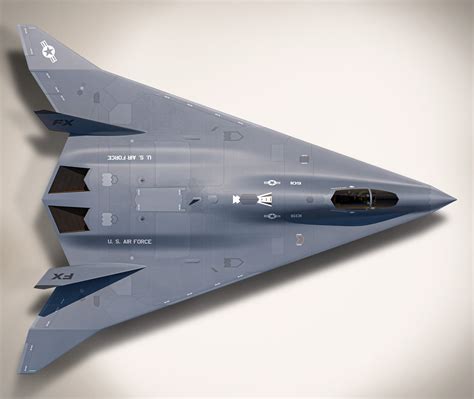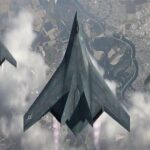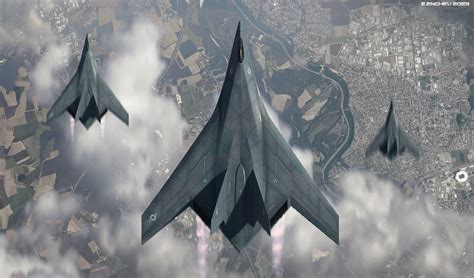
A principal designer of the B-2 stealth bomber, Thomas A. Arceneaux, faces a potential sentence of over three years in federal prison for transporting child pornography across state lines. Arceneaux, who played a crucial role in the development of the groundbreaking aircraft, pleaded guilty in February, marking a stunning downfall for the aerospace engineer whose work contributed significantly to national defense.
Arceneaux, 64, a resident of Melbourne Beach, Florida, awaits sentencing scheduled for August 8, 2024, in the Eastern District of Virginia. The charges stem from incidents in 2022 when Arceneaux transported images and videos depicting child sexual abuse from Florida to Virginia and subsequently within Virginia. The case has shocked the aerospace community and raised questions about the vetting processes for individuals holding positions of trust within defense contracting.
Arceneaux’s career spanned decades in the aerospace industry, primarily with Northrop Grumman, where he was instrumental in the design and engineering of the B-2 Spirit, a strategic bomber known for its stealth capabilities and pivotal role in modern warfare. His expertise in advanced materials and aerodynamic design was crucial to the bomber’s success. Now, instead of contributing to national security, Arceneaux’s actions have placed him in a starkly different and ignominious position.
The investigation began with a tip received by the National Center for Missing and Exploited Children (NCMEC) regarding online activity linked to Arceneaux. Federal authorities subsequently identified Arceneaux’s IP address and traced it to his residence. A search warrant executed at his home revealed numerous digital files containing child pornography, leading to his arrest and subsequent indictment. Arceneaux has since cooperated with authorities, admitting to the charges against him.
The gravity of the offense and the potential sentence reflect the seriousness with which the justice system treats crimes involving child exploitation. The U.S. Attorney’s Office for the Eastern District of Virginia is prosecuting the case, underscoring the federal government’s commitment to combating child sexual abuse.
The revelation of Arceneaux’s crimes has sent shockwaves through the aerospace community. Former colleagues and acquaintances have expressed disbelief and dismay at the news, grappling with the stark contrast between Arceneaux’s professional achievements and the reprehensible nature of his actions. This case serves as a reminder that no individual, regardless of their professional standing or contributions, is above the law, and it highlights the importance of rigorous background checks and ongoing monitoring of individuals in positions of trust.
The Arceneaux case also reignites the debate about the balance between technological advancement and the moral responsibility of individuals involved in creating and maintaining sensitive technologies. While Arceneaux’s technical expertise was undeniably valuable to the United States, his actions demonstrate a profound lack of moral judgment, raising ethical questions about the individuals entrusted with safeguarding national security.
The B-2 Stealth Bomber: A Legacy Tainted
The B-2 Spirit bomber, a product of Cold War-era strategic planning, represents a significant achievement in aerospace engineering. Its stealth technology allows it to penetrate heavily defended airspace undetected, making it a crucial asset in maintaining global security. Arceneaux’s role in the B-2’s development involved intricate calculations, advanced materials research, and innovative design solutions. He was reportedly involved in the shaping and material composition of the aircraft to ensure its radar-evading capabilities.
“The B-2 bomber is a marvel of engineering,” says Dr. Emily Carter, an aerospace engineering professor at MIT. “It represents a culmination of decades of research and development in stealth technology, and engineers like Arceneaux were instrumental in making it a reality.”
However, the legacy of the B-2 bomber is now partially shadowed by Arceneaux’s crimes. The association of such a prominent figure with such heinous acts raises uncomfortable questions about the human element in technological innovation. The case serves as a stark reminder that even the most brilliant minds can be susceptible to moral failings.
The Department of Defense and Northrop Grumman have declined to comment directly on the Arceneaux case, citing the ongoing legal proceedings. However, sources within the defense industry suggest that the incident has prompted a review of security protocols and background check procedures. While existing procedures are rigorous, the Arceneaux case highlights the need for continuous vigilance and improvement.
Legal Implications and Sentencing Guidelines
Arceneaux’s guilty plea signifies his acceptance of responsibility for his actions. However, the sentencing phase will determine the extent of his punishment. Federal sentencing guidelines for child pornography offenses are stringent, reflecting the severity of the crime. Factors that will influence the judge’s decision include the quantity and nature of the illegal content, Arceneaux’s cooperation with authorities, and any mitigating circumstances presented by his defense team.
According to legal experts, Arceneaux could face a sentence ranging from several years in prison to potentially decades, depending on the specific details of the case and the judge’s discretion. The U.S. Attorney’s Office is likely to argue for a significant sentence, emphasizing the vulnerability of the victims and the need for deterrence.
“In cases involving child pornography, the courts tend to impose substantial sentences,” explains criminal defense attorney Mark Johnson. “The focus is on protecting children and holding offenders accountable for their actions. The fact that Arceneaux held a position of trust and responsibility may be considered an aggravating factor.”
The sentencing hearing will provide an opportunity for the prosecution to present evidence and arguments in support of a lengthy prison sentence. Arceneaux’s defense team will likely argue for leniency, highlighting his past contributions to national security and his acceptance of responsibility. However, the ultimate decision rests with the judge, who will weigh all the evidence and arguments before imposing a sentence.
The Impact on the Aerospace Industry
The Arceneaux case has had a ripple effect throughout the aerospace industry. Companies involved in defense contracting are now facing increased scrutiny regarding their employee vetting processes. While background checks are standard practice, the Arceneaux case highlights the limitations of even the most thorough screening procedures.
“This incident has forced us to re-evaluate our security protocols,” says a senior executive at a major aerospace company. “We are looking at ways to enhance our background checks and improve our monitoring of employees in sensitive positions. The goal is to prevent similar incidents from happening in the future.”
The aerospace industry relies heavily on trust and integrity. Employees with access to classified information and sensitive technologies are expected to adhere to the highest ethical standards. The Arceneaux case has shattered that trust and raised concerns about the potential for other individuals to abuse their positions.
In response to the incident, some aerospace companies are considering implementing stricter policies regarding employee computer usage and internet access. These policies may include monitoring employee online activity and restricting access to certain websites. However, these measures could also raise privacy concerns and create a culture of suspicion within the workplace.
The Broader Context: Child Exploitation and Online Safety
The Arceneaux case is a stark reminder of the pervasive problem of child exploitation in the digital age. The internet has created new opportunities for offenders to access and distribute child pornography, making it more difficult for law enforcement to combat these crimes.
The National Center for Missing and Exploited Children (NCMEC) plays a crucial role in identifying and reporting online child sexual abuse. NCMEC works with internet service providers and social media companies to remove illegal content and identify potential offenders. The tip that led to the investigation of Arceneaux originated with NCMEC, highlighting the effectiveness of their efforts.
“Child exploitation is a serious problem that requires a comprehensive approach,” says John Clark, a spokesperson for NCMEC. “We need to educate parents and children about online safety, and we need to work with law enforcement to identify and prosecute offenders. The Arceneaux case is a reminder that anyone can be a perpetrator, regardless of their professional background or social standing.”
The Arceneaux case also underscores the importance of parental involvement in children’s online activities. Parents should monitor their children’s internet usage, talk to them about online safety, and report any suspicious activity to law enforcement. By working together, parents, educators, and law enforcement can help protect children from online exploitation.
Frequently Asked Questions (FAQ)
-
Who is Thomas A. Arceneaux? Thomas A. Arceneaux is a former principal designer for Northrop Grumman, where he played a significant role in the development of the B-2 stealth bomber. He is currently facing federal charges for transporting child pornography across state lines. According to the court documents, he plead guilty in February 2024 and awaits sentencing in August 2024.
-
What was Arceneaux’s role in the B-2 stealth bomber project? Arceneaux’s role in the B-2 stealth bomber project involved intricate calculations, advanced materials research, and innovative design solutions. He was reportedly involved in the shaping and material composition of the aircraft to ensure its radar-evading capabilities. His expertise contributed significantly to the bomber’s stealth capabilities.
-
What are the charges against Arceneaux? Arceneaux is charged with transporting child pornography across state lines. The charges stem from incidents in 2022 when he transported images and videos depicting child sexual abuse from Florida to Virginia and subsequently within Virginia. He has pleaded guilty to these charges.
-
What is the potential sentence Arceneaux faces? The potential sentence Arceneaux faces depends on federal sentencing guidelines for child pornography offenses. Legal experts suggest he could face a sentence ranging from several years in prison to potentially decades, depending on the specific details of the case and the judge’s discretion. He is scheduled to be sentenced on August 8, 2024.
-
What impact has the Arceneaux case had on the aerospace industry? The Arceneaux case has prompted a review of security protocols and background check procedures within the aerospace industry. Companies are considering implementing stricter policies regarding employee computer usage and internet access. The case has raised concerns about the potential for individuals to abuse their positions of trust and has highlighted the need for continuous vigilance.
A Deeper Dive into Stealth Technology and the B-2 Bomber
The B-2 Spirit bomber’s development was a monumental undertaking, reflecting a significant investment in cutting-edge technology and engineering prowess. Stealth technology, at its core, aims to minimize an aircraft’s detectability by radar, infrared, visual, and acoustic sensors. The B-2 achieves this through a combination of factors: its unique shape, the materials used in its construction, and the electronic countermeasures it employs.
The “flying wing” design, devoid of traditional tail surfaces, is a key element of the B-2’s stealth. This shape minimizes radar reflections, scattering radar waves in directions away from the source. The curved surfaces and blended wing-body configuration further contribute to this effect, reducing the number of sharp angles that can act as radar reflectors.
Radar-absorbent materials (RAM) are another critical component of the B-2’s stealth capabilities. These materials coat the aircraft’s surface, absorbing radar energy and converting it into heat, rather than reflecting it back to the radar source. The specific composition of RAM is highly classified, but it typically involves a mixture of polymers, ceramics, and metallic particles designed to absorb radar waves across a wide range of frequencies.
The B-2 also incorporates electronic countermeasures (ECM) to further reduce its detectability. ECM systems can jam enemy radar signals, create false targets, or alter the aircraft’s radar signature to make it appear as a different object. These systems are constantly evolving to keep pace with advances in radar technology.
“The B-2 is not simply invisible to radar,” explains Dr. Carter. “It’s more accurate to say that it presents a very small radar cross-section, making it difficult to detect and track. The combination of shape, materials, and electronic countermeasures makes it a formidable aircraft.”
The B-2’s stealth capabilities have made it a valuable asset in a variety of military operations, including the Persian Gulf War, the Kosovo War, and the Iraq War. Its ability to penetrate heavily defended airspace undetected allows it to strike high-value targets with minimal risk of being intercepted.
The Ethics of Dual-Use Technology
The B-2 bomber, like many advanced technologies, can be considered a “dual-use” technology, meaning it has both military and civilian applications. While the B-2 is primarily designed for military purposes, the technologies developed for its construction, such as advanced materials and aerodynamic design, have also found applications in civilian industries.
For example, the development of radar-absorbent materials has led to the creation of new materials for use in buildings, vehicles, and electronic devices. These materials can reduce electromagnetic interference, improve energy efficiency, and enhance the performance of electronic systems.
Similarly, the advanced aerodynamic design principles used in the B-2 have been applied to the design of more fuel-efficient aircraft and automobiles. These innovations can help reduce greenhouse gas emissions and improve the sustainability of transportation systems.
However, the dual-use nature of technology also raises ethical concerns. The same technologies that can be used to improve civilian life can also be used for destructive purposes. The development of the B-2 bomber, for example, has contributed to the ongoing arms race and the potential for military conflict.
“The ethics of dual-use technology is a complex issue,” says Professor David Miller, a bioethicist at the University of Oxford. “We need to carefully consider the potential benefits and risks of new technologies, and we need to develop ethical frameworks to guide their development and use. The Arceneaux case highlights the importance of considering the ethical implications of technology, even when it is developed for seemingly benign purposes.”
The Challenge of Insider Threats
The Arceneaux case highlights the ongoing challenge of insider threats in the defense industry. Insider threats refer to individuals who have authorized access to sensitive information or systems and who use that access to commit malicious acts, such as espionage, sabotage, or theft.
Insider threats can be difficult to detect because the individuals involved already have legitimate access to the information or systems they are targeting. They may also be skilled at concealing their activities and evading detection by security systems.
The Arceneaux case demonstrates that even individuals who have undergone rigorous background checks and who hold positions of trust can be susceptible to insider threats. This highlights the need for a multi-layered approach to security that includes not only background checks but also ongoing monitoring, employee training, and robust security systems.
“Insider threats are a persistent challenge for the defense industry,” says a security consultant who specializes in insider threat detection. “Organizations need to implement a comprehensive security program that addresses both technical and behavioral aspects of insider threats. This includes monitoring employee activity, educating employees about security risks, and creating a culture of security awareness.”
The Arceneaux case serves as a cautionary tale for the defense industry and underscores the importance of continuous vigilance and improvement in security practices. The cost of failing to address insider threats can be significant, both in terms of financial losses and damage to national security.
The Future of Stealth Technology
Stealth technology continues to evolve, driven by advances in materials science, electronics, and computer modeling. Researchers are exploring new materials that can absorb radar waves more effectively, as well as new shapes and designs that can further reduce an aircraft’s radar cross-section.
One promising area of research is metamaterials, which are artificial materials that have properties not found in nature. Metamaterials can be designed to manipulate electromagnetic waves in unusual ways, potentially allowing for the creation of “invisibility cloaks” that can completely shield an object from radar detection.
Another area of research is active stealth, which involves using electronic systems to actively cancel out radar signals or create false radar signatures. Active stealth systems can be more effective than passive stealth measures, but they also require more power and can be more complex to implement.
The future of stealth technology is likely to involve a combination of passive and active measures, as well as the integration of stealth into other aspects of aircraft design, such as propulsion and avionics. The goal is to create aircraft that are not only difficult to detect but also difficult to track and engage.
“Stealth technology is not a static field,” says Dr. Carter. “It’s constantly evolving in response to advances in radar technology. The future of stealth will likely involve a combination of new materials, new designs, and new electronic systems. The Arceneaux case shows the technology also needs to consider the human elements of security and integrity.”
The Lasting Impact of the Arceneaux Case
The Arceneaux case will likely have a lasting impact on the aerospace industry and the broader security community. It serves as a reminder that even individuals who have made significant contributions to national security can be susceptible to moral failings.
The case highlights the importance of continuous vigilance and improvement in security practices, as well as the need to address the ethical implications of technology development. It also underscores the pervasive problem of child exploitation in the digital age and the need for a comprehensive approach to online safety.
The Arceneaux case is a tragedy for all involved, including Arceneaux himself, his former colleagues, and the victims of his crimes. It serves as a stark reminder that no individual is above the law and that the pursuit of technological advancement must be tempered by a commitment to ethical conduct and social responsibility. The case will undoubtedly be studied and analyzed for years to come, as the aerospace industry and security community grapple with its implications.









